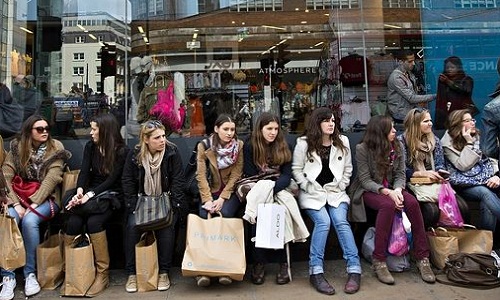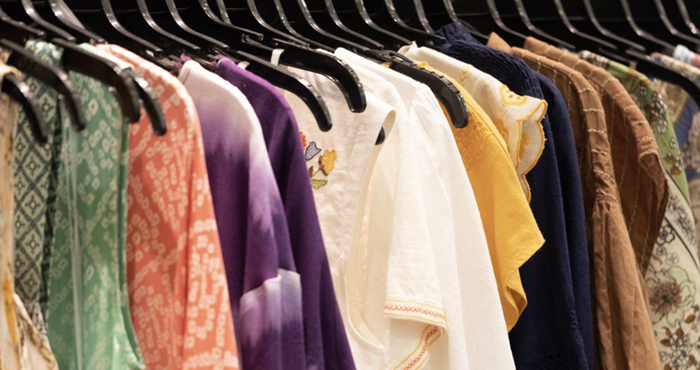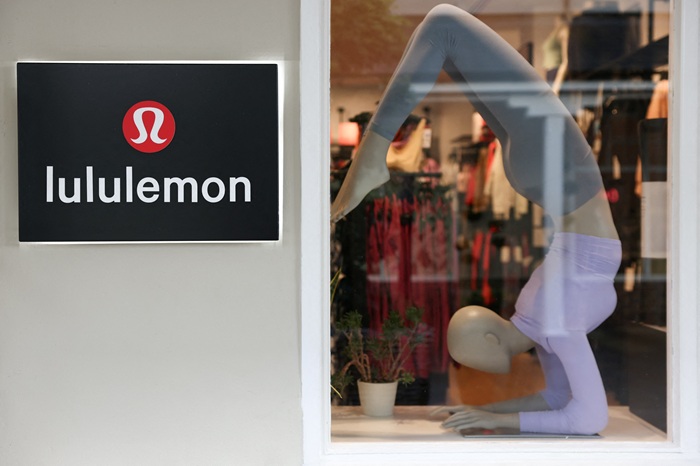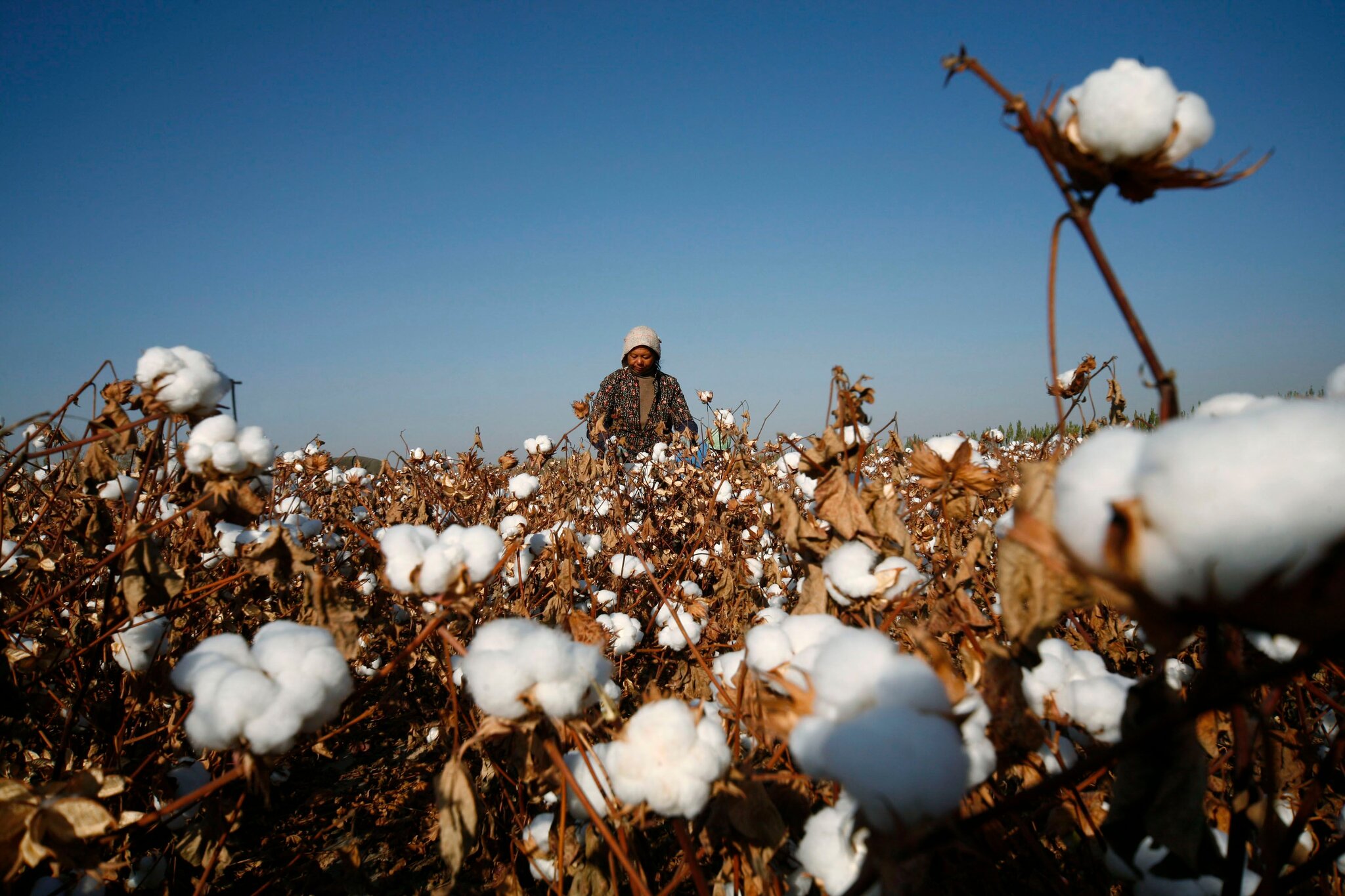FW
Archroma, a leader in color and specialty chemicals, turned three years old on October 1. Though at a nascent stage, the company has accomplished a great deal, believes CEO Alexander Wessels. The company is already a leader in driving sustainability in the value chain, intends to build on that position, making use of innovations the company has developed and continues to develop for implementation use across our markets.
Basel, Switzerland-based Archroma started in 2013 when private investment firm SK Capital Partners acquired Clariant’s textile, paper and emulsions businesses. In the next year, the company acquired 49 per cent of M Dohmen, an international group specializing in the production of textile dyes and chemicals for the automotive, carpet and apparel sectors. And in July 2015, Archroma added the global textile chemicals business of BASF. Now, the company has 25 production facilities- 11 in Americas, eight in the EMEA region and six in Asia.
Archroma supplies textile supply chain with chemicals for pre-treatment, dyeing, printing and finishing of textiles. It serves the paper market with its expertise in the management of whiteness, coloration, special coatings and strength for all kind of papers. It also supplies emulsions products used in paints, adhesives, construction, as well as in the textile, leather and paper industries. A typical example of the company’s efforts to improve sustainability in the textiles industry is its work in dyeing systems for denim under the brand Advanced Denim. Patagonia, one of the most forward thinking of the major clothes brands, was the first to announce a new dyeing and manufacturing process developed using Archroma’s Advanced Denim technology last year.
The International Finance Corporation (IFC) has joined hands with VF Corporation to enhance the long-term competitiveness and sustainability of the textile wet processing sector in Bangladesh by reducing excessive groundwater extraction and surface water pollution, energy and chemical use. The project will be carried out by IFC’s Bangladesh Partnership for Cleaner Textile (PaCT) programme, read a press release of the IFC. VF Corporation joins 12 other brands in the PaCT family bringing the total partner brands to 13.
The program has contributed to saving of water and energy of 14.4 billion liters and 1.23 million MWh per year, reduced GHG emission by 188,000 tonnes carbon-dioxide equivalent per year and resource saving worth $10 million annually in 162 partner factories. In addition to the PaCT project, VF Corporation is also partnering IFC in the Vietnam Improvement Project (VIP).
IFC program manager for PaCT Mohan Seneviratne said water is a key input in the textile sector and large quantities are consumed in the direct operations and supply chain. Current groundwater abstraction rates in Bangladesh are close to their limit and growth projection of $50 billion by 2021 can only be achieved with the development of sustainable water supplies, effluent treatment facilities and resource efficient practices.
In Bangladesh, the IFC is providing both investment and advisory support and working along with other stakeholders to help the garments sector become globally competitive and safe for its employees. As a part of this move, PaCT will engage with VF Corporation’s supplier factories in three ways- awareness building, basic cleaner production (CP) assessment and in-depth CP assessment.
Under its mega promotion campaign In Style ● Hong Kong, the Hong Kong Trade Development Council (HKTDC) has brought Hong Kong Galleria. This features the best of fashion, design and gourmet products for consumers at Bangkok’s Siam Paragon. The ongoing fair will wind up on October 9. HKTDC Executive Director Margaret Fong said that Hong Kong is not only Asia’s leading business hub, it is also Asia’s lifestyle trendsetter. The Hong Kong Galleria at Siam Paragon has been divided into three zones that brings an all-round Hong Kong experience to consumers in Bangkok.
The HKTDC Design Galleria has collaborated with the popular online shopping site Lazada Thailand on an O2O retail service. This features lifestyle brands like: The Candle Co, Eco Concepts, Glush/, Snugalicious and Tea Lab. On-the-spot ordering with immediate home delivery is available to shoppers.
Through an e-wardrobe installed at the venue, visitors can try on the latest collections by popular Hong Kong fashion designers like Doris Kath Chan, Bonita Cheung, Koyo William Cheung, Polly Ho, Henry Lau and Mountain Yam. The six designers have earlier featured at international fashion events such as Tokyo Fashion Week, Copenhagen Fashion Week, New York Fashion Week and Centrestage in Hong Kong.
Workers in factories of South India that produce clothing for Dutch brands are exploited and poorly paid. Women get paid lower than men for doing the same work. Many garment workers are indebted, with most of them having taken loans. Savings from monthly wages are a distant dream.
The production target is easy to reach only when the product is easy and small. For finishing tasks, like attaching sleeves, cuffs or necks, the target is 60 to 90 per hour. The stress of production targets is constant. Supervisors shout and use abusive words. If a worker uses the factory bus, money is deducted from wages. Women workers are forced to resign if pregnant or if management thinks they are too slow and have to pause too often. Many Dutch brands are not transparent about where their garments are made.
The Indian textile and garment industry is the second largest foreign exchange earner after agriculture, with Bangalore as a major hub, accounting for about 15 per cent of the production of exported garments. There are about 1,200 garment factories in Karnataka, 700 of which are officially registered, employing an estimated 5,00,000 people, many of them migrants from Orissa, Assam and Jharkhand.
China’s textile millers in the Shandong province are in talks with their Pakistani counterparts for a possible repositioning in Pakistan, said Pak China Joint Chamber of Commerce and Industry’s (PCJCCI) newly-elected president Wang Zihai. He further said that when it comes to investing in the region, Chinese millers prefer Pakistan over Bangladesh or Vietnam.
Wang said Pakistan’s textile sector would be able to upgrade its dilapidated technology and China can have access to European markets through the country’s Generalised System of Preferences (GSP) Plus status. Wang, who headed a delegation of Chinese companies in Punjab, said China-Pakistan Economic Corridor (CPEC) will bring other investment avenues as well. He hoped that fresh investments and joint ventures between different business groups of Pakistan and other nations due to the CPEC initiative could push the investment figure to $100 billion in the future.
Currently, there are around 700 small, medium and large scale Chinese companies working in Pakistan and the number is likely to increase in the coming years. The PCJCCI is currently examining different sectors like electronics, automotive, education exchange programs, insurance, agriculture and textile for means to establish a joint link.
With its volume increasing by 10 per cent to 1.2 million tonnes, Bangladesh is expected to remain the world's top importer of cotton in 2016-17. Following it is Vietnam that imports 1.1 million tonnes a 15 per cent rise, says the International Cotton Advisory Committee (ICAC), a platform of governments of cotton producing and consuming countries.
In a release, the ICAC has said in 2016-17, world cotton consumption would presumably remain unchanged from 2015-16 at 23.8 million tones. But it is projected to exceed production by 1.3 million tonnes. Consumption was 23.78 million tonnes in 2015-16 and 24.20 million tonnes in 2014-15. Production was 21.10 million tonnes in 2015-16 and 26.20 million tonnes in 2014/15.
As a result, world stocks are projected to decline by 7.0 per cent to 18.1 million tonnes which was 19.37 million in 2015-16 and 22.31 million tonnes in 2014-15. Although China's consumption is forecast to decline for the seventh consecutive season by 2.0 per cent to 7.2 million tonnes, it will continue to be the world's largest consumer of cotton, the release said.
It also said although domestic cotton prices have fallen since China implemented its direct production subsidy policy (they remain above levels on the international market and well above polyester prices). India's cotton consumption is projected to remain stable at 5.2 million tonnes as mills increase the share of other fibers in cotton-blended yarns. Use of the commodity by Pakistan's mills is expected to escalate by 23,000 tonnes to 2.3 million tonnes assuming that the energy situation improves.
Exports from the United States are projected to increase by 26 per cent to 2.5 million tonnes while exports from India, the second largest exporter, is forecast to fall by 35 per cent to 8,20,000 tonnes. In 2016-17, the world cotton area is forecast to fall by 1 per cent to 30 million hectares, which is the smallest amount of area under cotton since 2009-10, when the planted area reached 29.7 million hectares.
A permanent tripartite consultative council will be formed in Bangladesh to address labor-related issues. The council will have representatives from workers in the readymade garment sector and factory owners from compliant factories and will consist of the government, representatives of the apparel sector and workers.
It aims at a proper system and regular dialogues among the government, workers and owners’ representatives for keeping sound and harmonious industrial relations and promptly responding during crisis situations and also play a pro-active role in this regard. It will aim at mitigating problems, especially industrial unrest, and thus reduce the distance between employers and employees.
The belief is that a permanent tripartite consultative council for the readymade garment sector will take it forward and act as a bridge between employers and employees to reduce the trust deficit. It is also seen as enabling the garment sector to make workers its partners in its journey toward the achievement of the ambitious 50 billion dollar garment export target by 2021.
Most garment workers are women and women want adequate representation in the proposed committee. The council may include representatives of global apparel brands since they are also part of the supply chain. Bangladesh is the second-largest apparel exporter in the world.
The 2016 Global Denim Awards will take place in Amsterdam on October 26. About 11 designers will present their looks to a panel of international denim experts. Among the 2016 participants are Marina van Dieren and Christina Albrecht, known for their gender neutral designs. They create new surface designs, weaving and manipulation techniques, while working form a zero waste perspective.
Marius Op’t Enyde launched his own London-based menswear brand, Marius Petrus, in 2012. The designer is known for graphic shapes, intense colors and high-tech materials. Designers Gianluca Ferracin and Andrea Masato use gender as a study of forms, volumes and lengths to create gender neutral clothing.
Calik is a designer from Turkey who has established her own urban underground brand, highly influenced by music, art history and anthropology. Designer Anbasja Blanken has founded her own trouser line Ala Blanka and Tess Van Zalinge’s debut label links lingerie and outerwear.
Lisa Konno and Karin Vlug run their own respective labels from a boat in Amsterdam’s harbor. The duo collaborated on Collect—a garment that allows multiple interpretations and stylings. The pair embrace a zero-waste philosophy, and construct smart apparel that dodges classic fashion norms. Designer Deniz Gür is known for his minimalistic designs that cater to working women.
"Whether it is Spring/Summer or Autumn/Winter, fashion changes every season and fashionistas across the globe are increasingly becoming obsessed with changing their clothes and style as per the latest offerings from the iconic fast fashion brands. With each new season, garments of the previous collection are becoming redundant thus giving a high to the fashion brands."

Whether it is Spring/Summer or Autumn/Winter, fashion changes every season and fashionistas across the globe are increasingly becoming obsessed with changing their clothes and style as per the latest offerings from the iconic fast fashion brands. With each new season, garments of the previous collection are becoming redundant thus giving a high to the fashion brands.
Today the global fashion industry is worth $1.2 trillion, and more than $250 billion of this is spent annually in the US alone. Fast fashion as a concept is actually a business model that moves designs from the runway to stores quickly to capture current trends and typically includes inexpensive, poorly constructed garments that can be ruined after a couple of trips through the washing machine.

While fast fashion marketers are minting money, the fickleness of trends and the demand for clothing is raising concern amongst brands and consumers about the environmental impact. They are willing to focus on incorporating sustainability into their business models. Brands willing to create sustainable fashion require a two pronged effort. While brands need to make products that minimize any negative impact on the environment, it also improves the working conditions for everyone involved in design and manufacturing.
Environmental hazard of fast fashion
The fashion industry is among the most polluting in the world, with a number of chemicals and water being used produce clothing. Wastewater discharged by mills each year contains harmful chemicals such as formaldehyde, chlorine and heavy metals such as lead and mercury which causes global industrial water pollution. Moreover cotton production use up a significant amount of water resources.
Another worrying aspect of fast fashion industry is the human cost it involves. Garment manufacturing is the third-largest industry in the world, producing about $700 billion annually. However the working conditions of many of the millions of workers employed in garment manufacturing are of great concern. In April 2013 more than 1,100 Bangladeshi workers were killed when the Rana Plaza garment factory collapsed. The year before, 117 people were killed when a fire swept through another factory in Bangladesh.
New sustainable fashion brands emerging globally
Amidst rising concern of for environmen, a new trend is emerging as increasing number of brands are working towards sustainable fashion. In the last few years brands which believe in sustainable fashion, have striving hard to create an antithesis of fast fashion. The Los Angeles based brand Tom Cridland is responsible for the 30 Year T-Shirt, the 30 Year Sweatshirt and the 30 Year Jacket. The founder, Tom Cridland, and its managing director, Deborah Marx strongly disapproves the tendency for once-worn clothing to be discarded. According to them concept is a fun way to promote sustainability while not preaching about environmentalism and clothing manufacturing rights. Celebrities like Leonardo DiCaprio, Rod Stewart and Ben Stiller have come forward to promote the brand.
Several fashion-forward brands are striving to promote the concept clothes can be inexpensive, ethically made and sustainable. Asos Eco Edit Online fashion retailing giant has an exclusive ‘Eco Edit' section that features a wide range of what it says are sustainable clothing, accessories and beauty items, including handcrafted jewelry to up cycled vintage pieces. Another iconic high end designer Stella McCartney is a strong believer of vegan living and the brand doesn’t use any leather or fur in its designs. Patagonia, the brand, which caters to outdoor apparel needs, has also committed to monitoring all stages of production closely to ensure that all products are produced under safe, fair, legal and humane working conditions throughout the supply chain. The quintessential brand for jeans Levi’s has created a collection called Levi's Waste Less,which features clothing made of 20 percent postconsumer waste — specifically, recycled plastic bottles. Three to eight plastics bottle are used per pair of WasteLess jeans.
Many other prominent fast fashion brands like H&M and Zara are also taking up initiatives to cover up the darker side of the fast fashion business.
South Korea’s home-grown brands have been actively seeking opportunities in foreign markets. Samsung C&T’s fashion business is working on a plan to export its women’s apparel brand Kuho and men’s apparel brand Juun. J. The company that aims to earn $90.3 million in sales from Kuho this year expects to double sales by 2020 by entering global markets such as the United States.
Juun J became the first designer in South Korea to be invited to the global men’s apparel fashion show Pitti Uomo held in Italy early this year. Korean fashion group Hyungji in September acquired De Castelbajac, the fashion label launched by French fashion designer Jean-Charles de Castelbajac, a pioneer of the avant-garde who dressed the late Pope John Paul II, Lady Gaga and Madonna. It was one of the biggest merger and acquisition deals Korea’s indigenous fashion brands had ever made since 2000.
Hyungji, well-known for its low- and mid-tier women’s apparel brands such as Crocodile Lady and Chatelaine decided to add the French fashion line-up to its business portfolio in the hope that the deal helps not only to expand its presence in the golf-wear and handbag markets but also enter the markets for home and living goods and men and children’s clothing.












